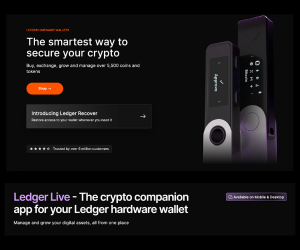Opinion by: Yanal M. Hammouda, head of market enlargement at Wingbit
The decentralized bodily infrastructure community (DePIN) sector noticed $150 million of capital stream throughout Q1 2025, with a projected market dimension of $3.5 trillion by 2028. But probably the most vital improvement isn’t the capital raised however the place these networks function.
Rising markets just like the Center East, Southeast Asia and South America — fairly than Silicon Valley — are driving the way forward for DePIN adoption.
DePIN and blockchain market dynamics favor areas with infrastructure gaps and progressive Web3 laws. DePIN clusters thrive the place conventional infrastructure has failed, when populations are compelled to seek out community-driven options as an alternative. Traders and builders in DePIN should search out these market circumstances outdoors of the US.
DePIN sandboxes
Silicon Valley’s historic success in Web2 was buttressed by landmark laws resembling Part 230 and the Digital Millennium Copyright Act. In Web3, nonetheless, the US has solely this yr launched the GENIUS Act, and the White Home’s July Digital Belongings Report was the primary federal acknowledgement of worth generated from DePIN. Whereas the US is simply starting its DePIN journey, thriving Web3 ecosystems elsewhere present their success hinges on regulatory readability.
Dubai’s Digital Belongings Regulatory Authority (VARA), established in 2022, creates particular sandboxes for Web3 infrastructure tasks. The Financial Authority of Singapore (MAS) actively helps tokenizing real-world belongings by way of initiatives resembling Mission Guardian and the Singapore Blockchain Innovation Programme.
On the identical time, the nation’s fintech regulatory sandbox clearly defines the parameters for blockchain experimentation.
In South Korea, the telecommunications large LG U+ has been trialing a blockchain-based cross-border fee system since 2018, a rollout that will have confronted years of approval processes beneath the US Federal Communications Fee’s guidelines. The nation noticed a 15% year-on-year progress within the variety of blockchain service suppliers in 2023.
Associated: Southeast Asia to drive DePIN progress
Vietnam’s nationwide blockchain technique, launched in late 2024, explicitly supplies authorized readability for blockchain functions in finance, logistics, agriculture and knowledge administration. The federal government is at the moment piloting its NDAChain platform, a nationwide blockchain that goals to spice up its e-government and digital financial system with decentralized identification of residents.
Deeper pockets for DePIN tasks
Whereas the Bay Space nonetheless captured 24% of the $368 billion in international enterprise capital funding in 2024, the true capital for blockchain is flowing elsewhere.
The UAE ranked third (the US comes fourth) on the Henley Crypto Adoption Index, which assesses cryptocurrency and blockchain integration throughout nations. With as much as 7,100 new millionaires anticipated to flock to Dubai in 2025, the Gulf’s expat group — with its excessive disposable earnings and bullish attitudes towards rising applied sciences like DePIN — continues to develop.
Abu Dhabi’s $500-million Digital Vitality Infrastructure Fund particularly targets “blockchain, DePIN, AI, cloud, and different compute cluster functions” in its funding thesis. The UAE is rising because the chief within the Web3 area by placing firepower behind DePIN functions in sectors the place conventional infrastructure has didn’t hold tempo with demand.
Singapore’s state funds, Temasek and the Authorities of Singapore Funding Company (GIC), have shifted their focus to blockchain infrastructure outdoors conventional tech hubs. In recent times, the GIC has invested $70 million in Hong Kong-based BC Group, dad or mum firm of crypto alternate OSL.
Compared, Temasek led a $110-million funding spherical in Hong Kong-based Animoca Manufacturers, Asia’s most outstanding blockchain funding agency. Sovereign wealth funds are strategizing for a future constructed on digital infrastructure.
Constructing requirements over luxuries
New York and Silicon Valley have been as soon as celebrated as the one locations to meaningfully scale a Web3 product. Not anymore.
Although most of Helium’s 380,000 decentralized wi-fi hotspots nonetheless exist throughout the US, new deployments quickly develop customers’ protection in Southeast Asia and South America.
Throughout Helium pilots in Mexico, subscribers to telecommunications firm Movistar averaged 390 megabytes, or seven hours of net looking, of every day knowledge on the Helium community, exhibiting how DePIN can clear up actual connectivity challenges.
The message for DePIN builders and entrepreneurs is evident: Design for customers who want your infrastructure, not those that may discover it attention-grabbing in a Palo Alto espresso store. For buyers, the chance lies in figuring out tasks that clear up actual issues in markets with regulatory readability and rising adoption. Policymakers can facilitate this with frameworks that accommodate new blockchain-based tasks fairly than making an attempt to drive them into current, inflexible classes.
Corporations in Asia led the cell revolution of the 2010s in response to dropping their lead on desktop, creating giants like WeChat, Gojeck and Kakao, which now make these markets near-impossible for Silicon Valley to penetrate. International locations just like the UAE, Vietnam and Singapore at the moment are establishing an analogous lead on this market long-term, and Web3 firms ought to take note of what this may imply in 5 to 10 years.
Opinion by: Yanal M. Hammouda, head of market enlargement at Wingbit.
This text is for basic data functions and isn’t meant to be and shouldn’t be taken as authorized or funding recommendation. The views, ideas, and opinions expressed listed below are the creator’s alone and don’t essentially mirror or symbolize the views and opinions of Cointelegraph.





